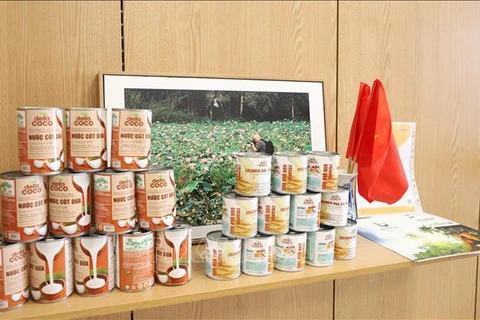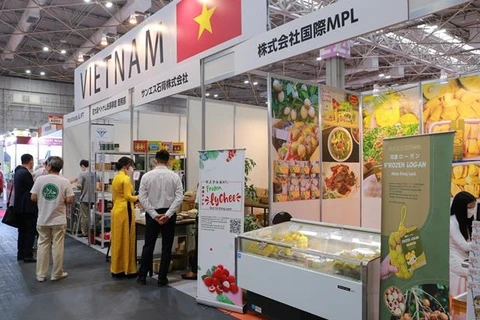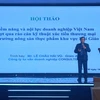Hanoi (VNA) – Many Vietnamese businesses have won preference from consumers thanks to their product quality and active participation in major events to further promote domestic goods.
With higher quality, diverse designs and competitive prices, many “made-in-Vietnam” products have established their foothold on the domestic and global markets.
This is also the strategy of "walking on two legs": both promoting exports and increasing coverage via modern retail distribution channels and traditional markets, thus affirming its position in the home market.
Conquering consumers
According to Phan Minh Thong, Chairman of Phuc Sinh Group, in the past two years, despite the complicated development of the COVID-19 pandemic, his company has been still successful in the domestic consumption segment, with more customers and strong revenue growth. It has put its products on the e-commerce platform “K PhucSinh”, receiving a warm response from customers.
Phuc Sinh's agricultural products are gradually becoming popular and familiar to domestic consumers. To conquer the domestic market, Thong said that in 2022, PhucSinh needs to expand its area and double its capacity to meet the growing demand.
“It is expected that in the next 5-10 years, PhucSinh will move towards a giant hypermarket with a full range of essential food items both at home and abroad. People can buy anything at the PhucSinh chain. At the same time, K PhucSinh will enter the Top 10 e-commerce platforms providing food in general and coffee and pepper in particular," he said.
Textile and garment makers are among those succeeding in conquering the domestic market. Firms such as Garment 10, Viettien, Duc Giang, Nha Be, Hoa Tho, Hanosimex and TNG have gained a firm foothold, and each recorded annual domestic revenues in hundreds of billions of VND.
Cao Huu Hieu, General Director of the Vietnam National Textile and Garment Group (Vinatex), said that 10 years ago, Vietnamese consumers preferred foreign garment products due to their low prices, but now many people have selected domestically produced clothing with higher quality.
Vinatex, apart from Hanoi, has opened more fashion shopping centres in other localities like Ho Chi Minh City in the south and Da Nang in the central region to give consumers easier access to quality domestic products, he noted.
Improving quality, increasing “coverage”
A recent study by market research company Nielsen revealed that after the COVID-19 pandemic, 76% of Vietnamese consumers showed a preference for local products, especially branded, quality and healthy items.
This trend is partly attributed to the fact that Vietnamese goods now have higher competitiveness thanks to higher quality and reasonable prices. As a result, they are enjoying an increasing presence in different distribution channels.
According to the Ministry of Industry and Trade (MoIT), Vietnamese goods make up at least 90% of the products sold in supermarkets, for example 90-93% at Co.opmart, 90-95% at Satra, and 95% at Vissan. The rate stands at 60% and above at traditional markets and convenience stores.
Le Viet Nga, Deputy Director of the MoIT’s Domestic Market Department, said businesses are now aware that to win consumer trust, they have to improve product quality, boost sci-tech applications, and use advanced management measures to reduce production costs, with higher quality, designs, and after-sale services.
Many enterprises which have long focused on exports are now turning their attention more and more to the domestic market and offer products that meet high standards for local buyers. They have also managed to develop their own domestic distribution networks in Vietnam.
Businesses are also aware of the need to build and protect their brands, and actively take part in major events promoting Vietnamese goods among domestic consumers and overseas Vietnamese, Nga said.
She noted that to help enterprises expand their domestic presence, relevant agencies will continue to effectively carry out different programmes and plans to promote trade, develop supporting industries, and assist firms to step up sci-tech applications, thereby raising their productivity and competitiveness.
In particular, one of the focuses is encouraging companies to conduct digital transformation by utilising e-commerce, e-payments, and modern logistics methods so they can further engage in domestic and foreign distribution chains. Besides, high-quality Vietnamese goods and services favoured by consumers will also be promoted as national brands, the official added./.

























